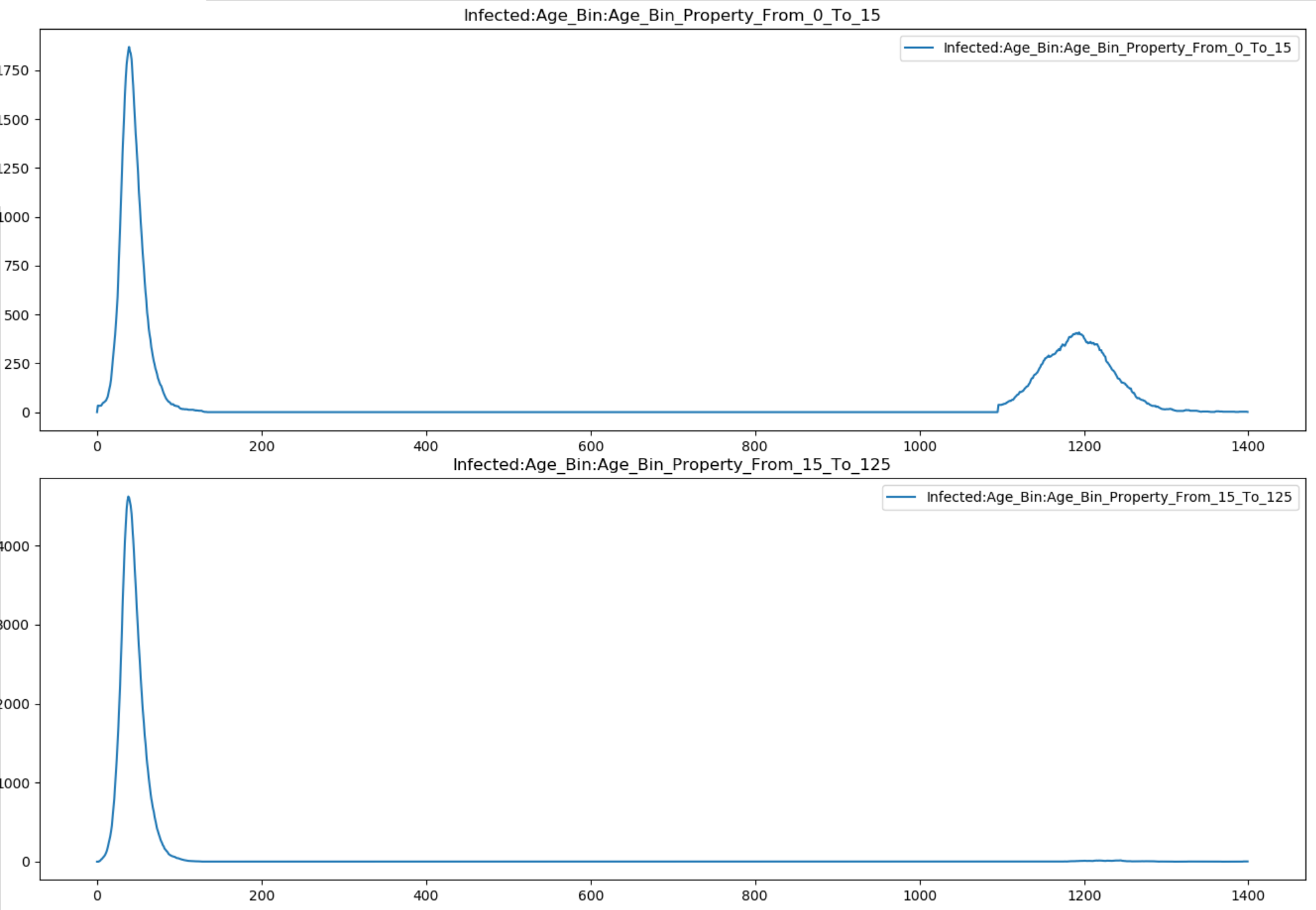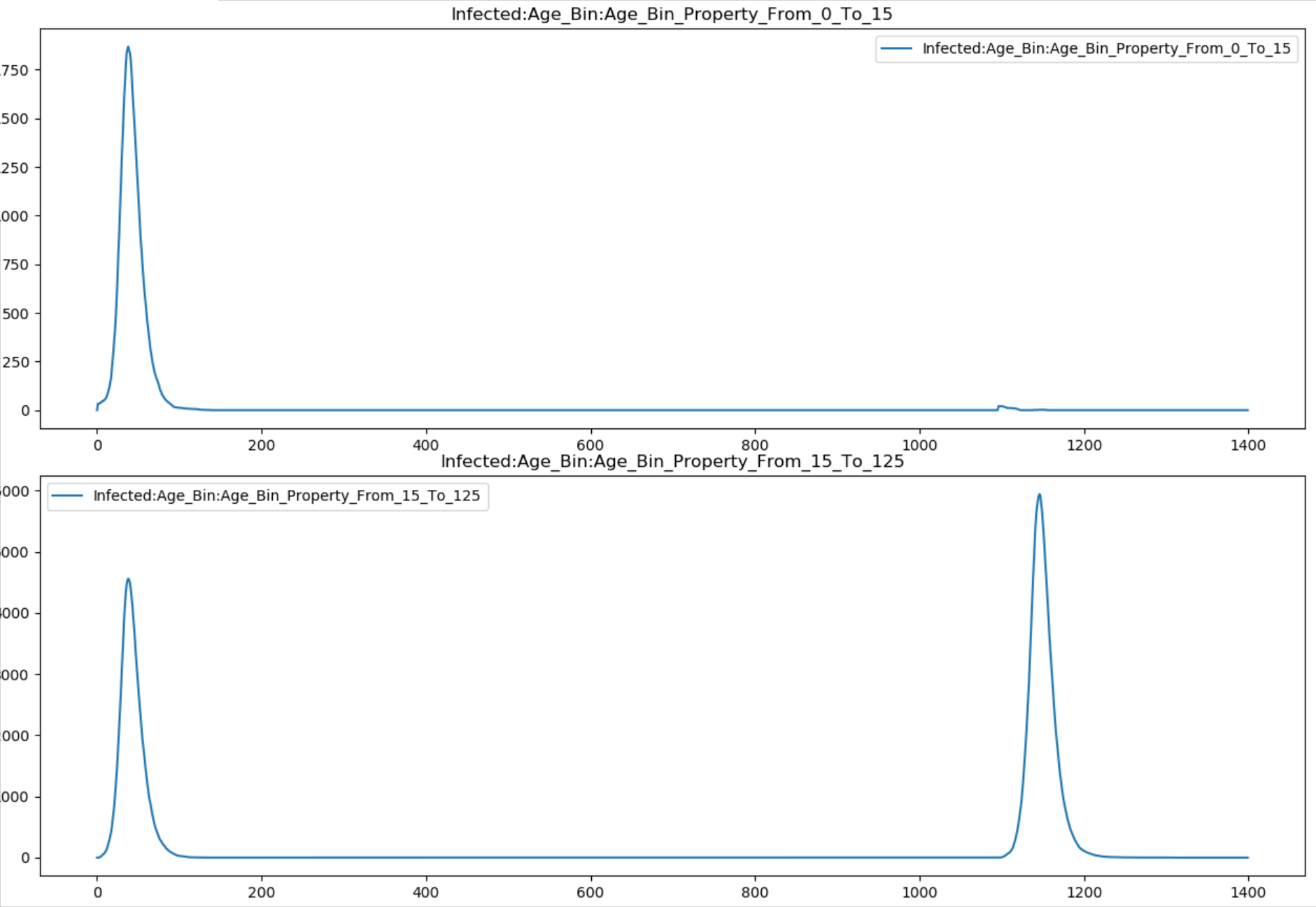Age-dependent immunity¶
Adults and children can have different rates of progression during the latent phase of TB. Additionally, age can affect the relative proportion of smear-negative, smear-positive, and extrapulmonary disease presentations. EMOD has separate configuration parameters for adults and children to facilitate more realistic TB simulations. By default, the line between children and adults is defined at 15 years, though you can modify this value.
The following sections walk through some example simulations. The examples run for approximately 20 years and have an initial TB outbreak and then a second outbreak at year 15. Both outbreaks are targeted to children. To run these simulations yourself, see the TB/Age_Immunity scenario in the downloadable EMOD scenarios zip file. Review the README files there for more information.
Lifelong immunity¶
If infection confers lifelong immunity to both children and adults, you will see only children born after the initial outbreak become infected when the second outbreak occurs. All adults are immune.
The following property report graph shows how only children are infected at the second TB outbreak at year 15.

Figure 1: Outbreaks with lifelong immunity¶
Waning immunity¶
You can also configure immunity to wane over time. In generic EMOD simulations, you can specify waning immunity that is applied equally across all individuals in a population. There are many different waning effect classes that you can choose from, depending on the decay curve desired. See Waning effect classes parameter. TB simulations also allow to you configure additional waning heterogeneity by indicating that only a specified fraction of the population will have waning immunity, using TB_Immune_Loss_Fraction.
The following property report graph shows the course of the outbreaks when immunity begins to wane after 10 years, making the entire population completely susceptible after 12. At the time of the second outbreak, all individuals are infected.

Figure 2: Outbreaks with waning immunity¶
Childhood vaccination¶
The effect of childhood vaccination can greatly affect the course of an outbreak. In this example, newborns are routinely immunized against TB. The vaccine has 100% efficacy and immunity lasts for 15 years. Therefore, when the second TB outbreak occurs at year 15, all children are immune but adults are susceptible because the immunity they gained during the first outbreak has waned to zero.
The following property report graph shows the course of the outbreaks when children are immunized. At the time of the second outbreak, only adults are infected.

Figure 3: Outbreaks with waning immunity¶